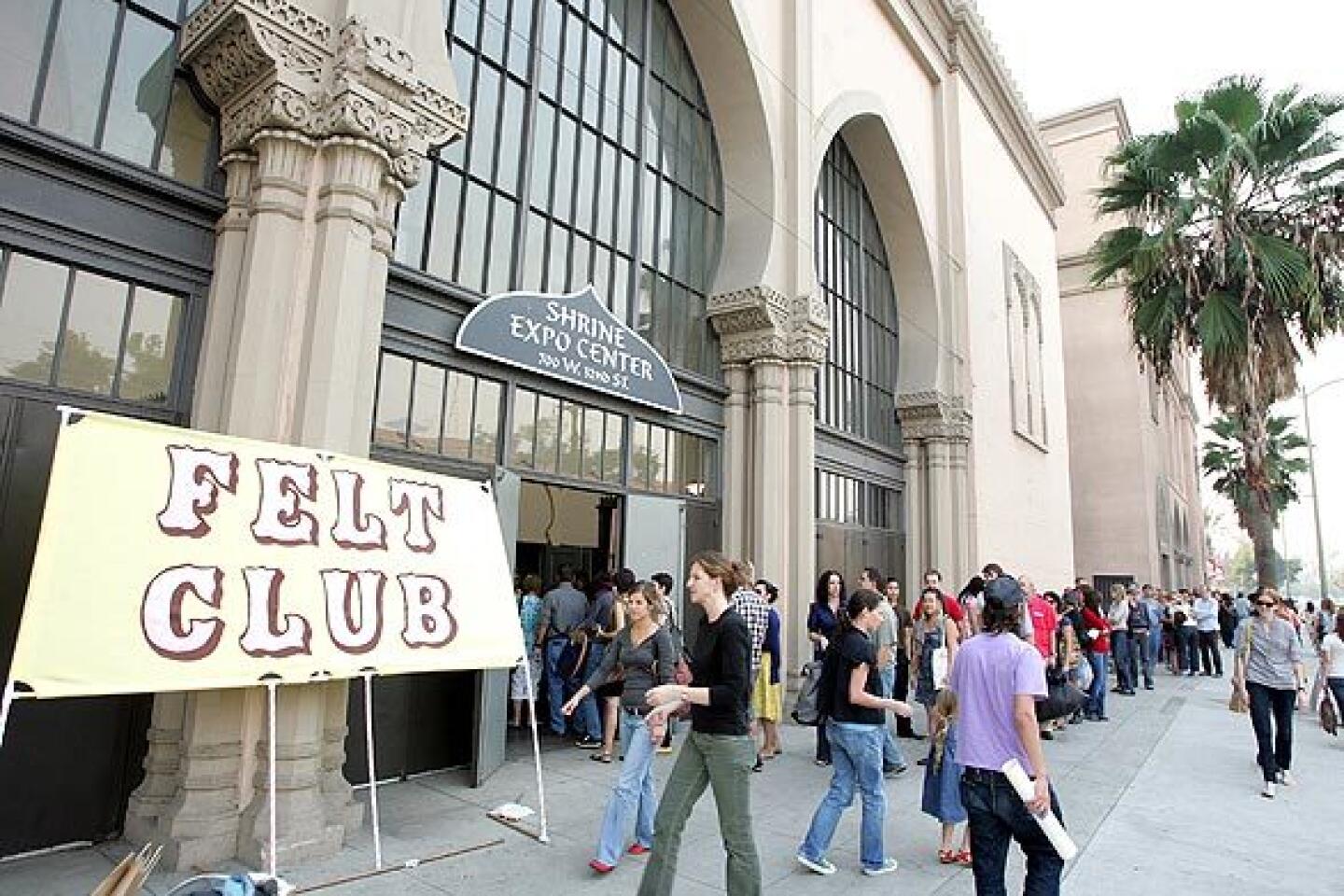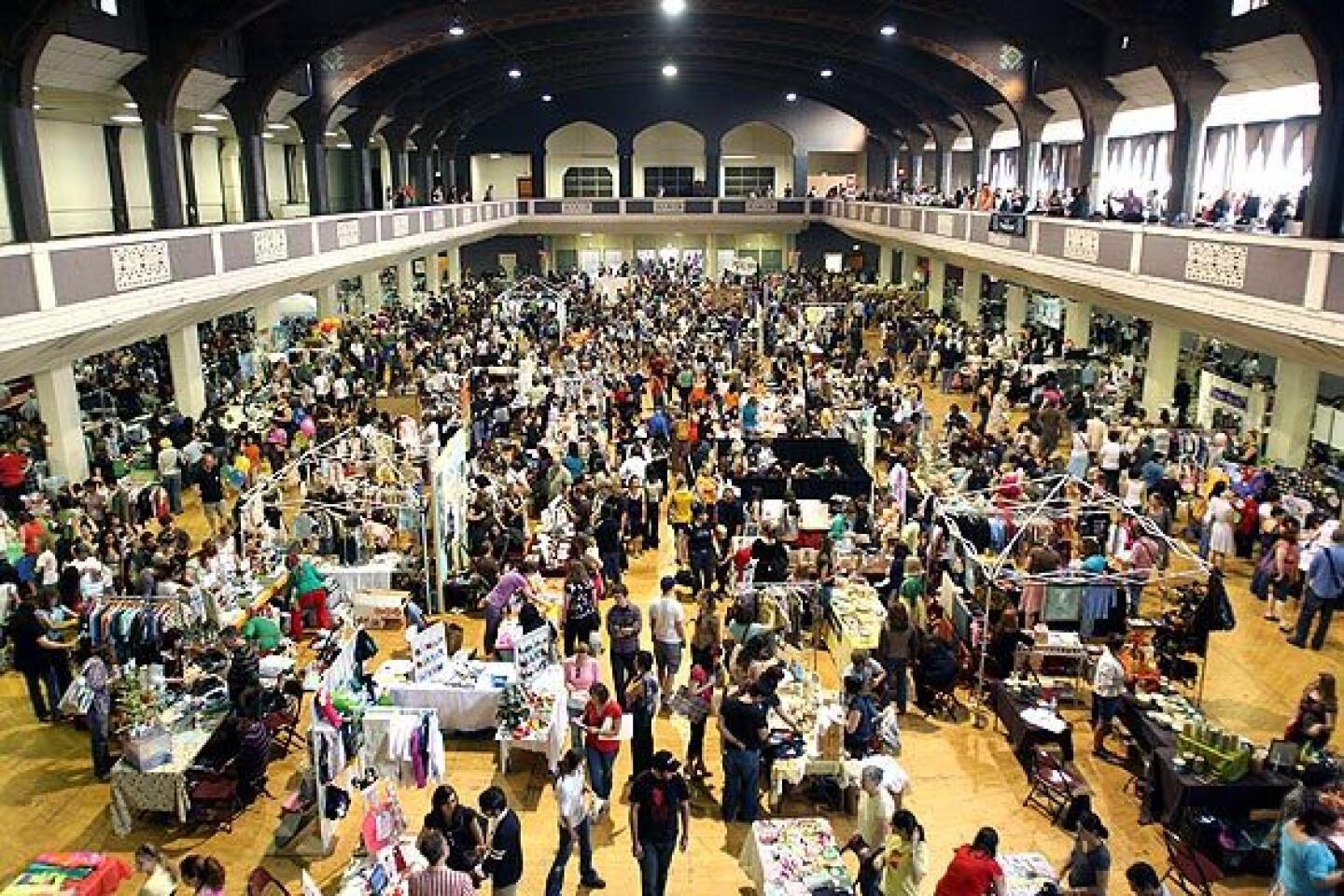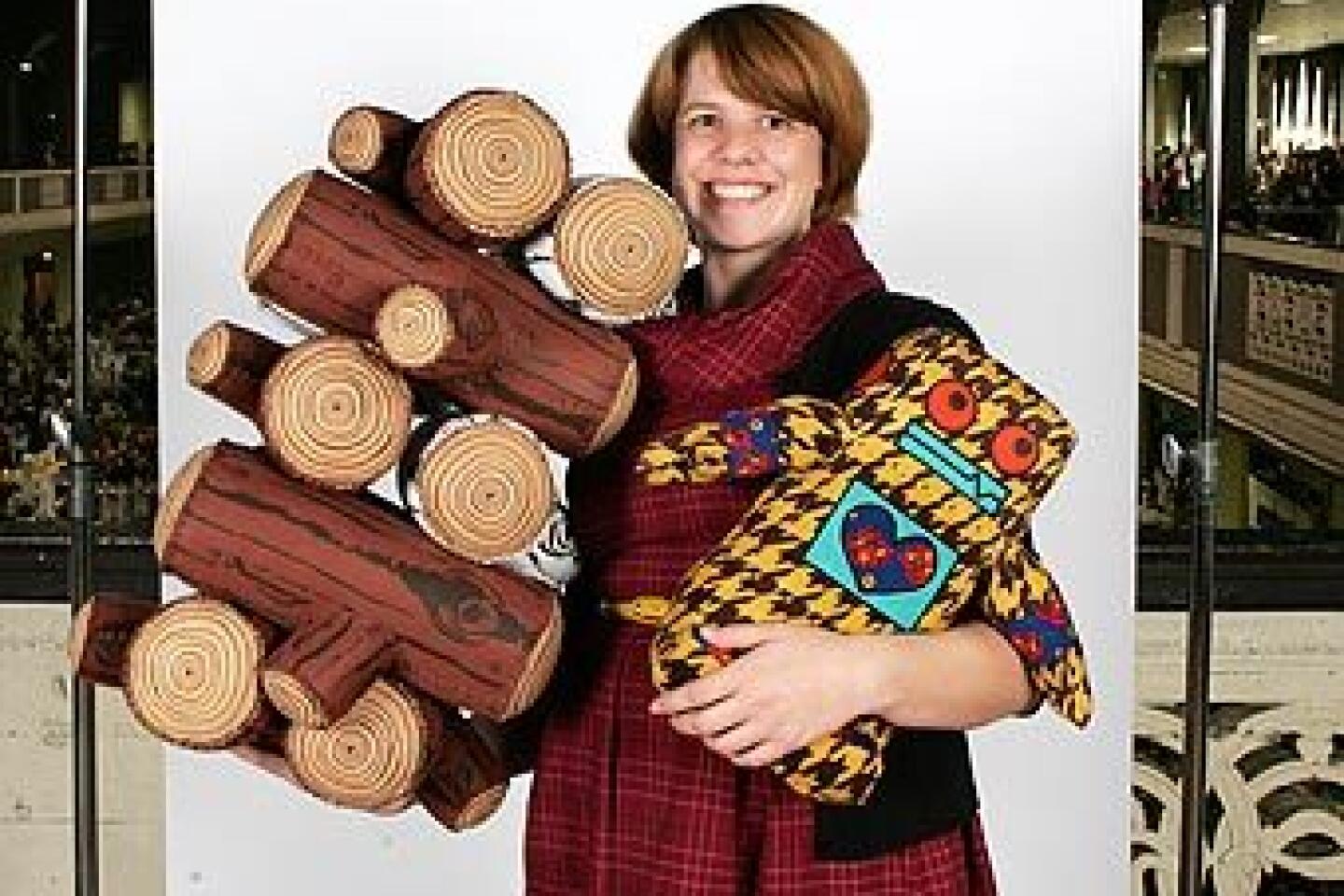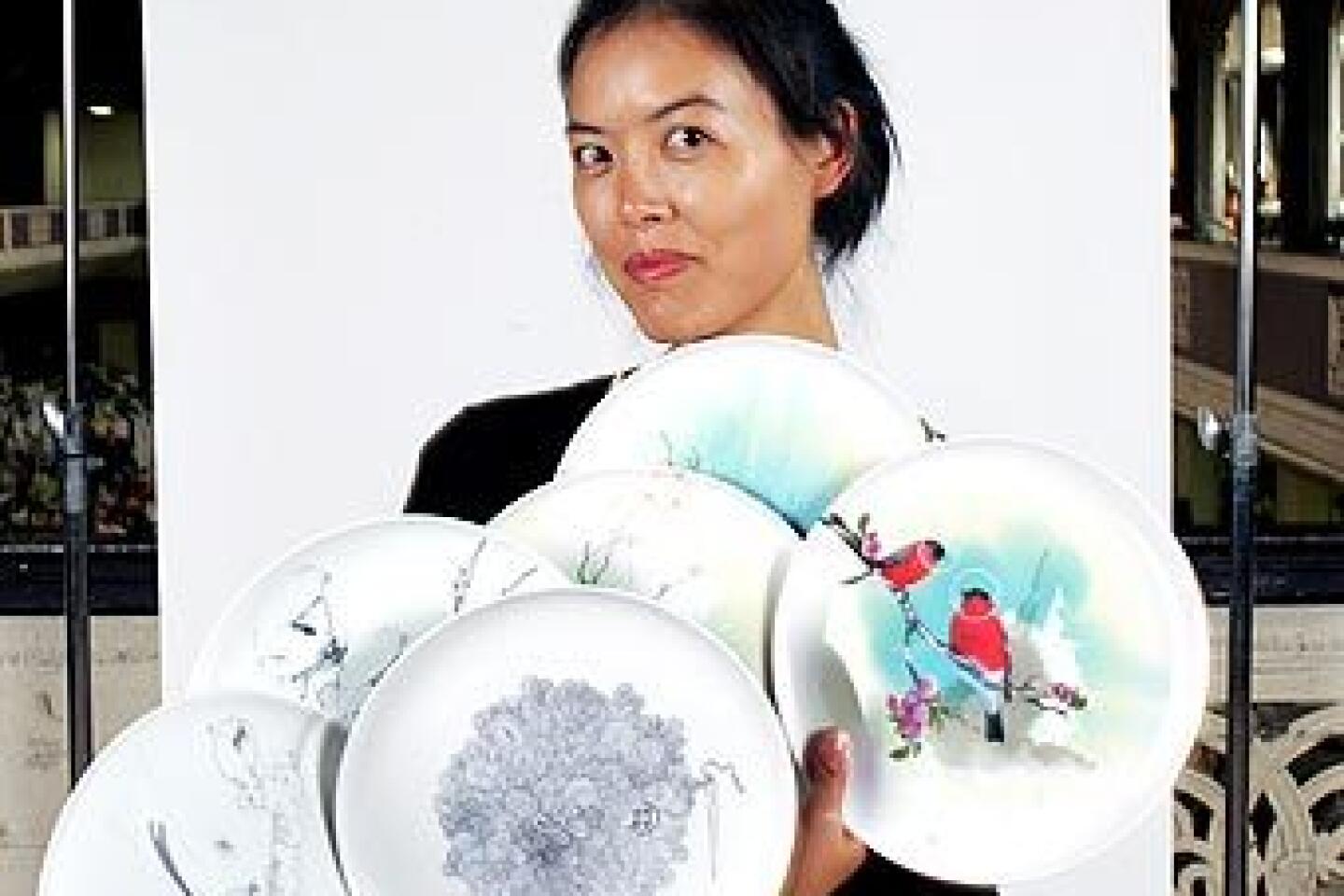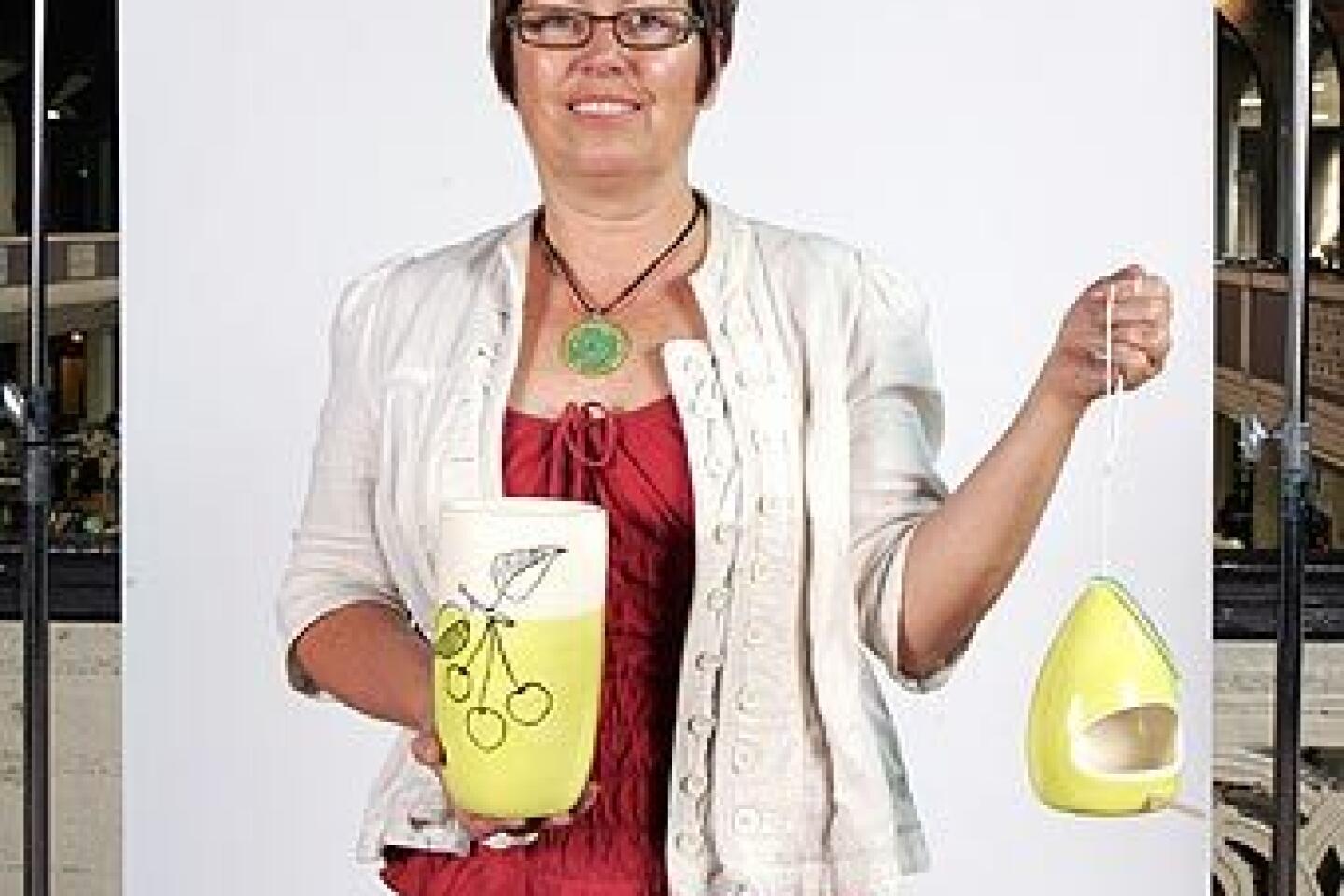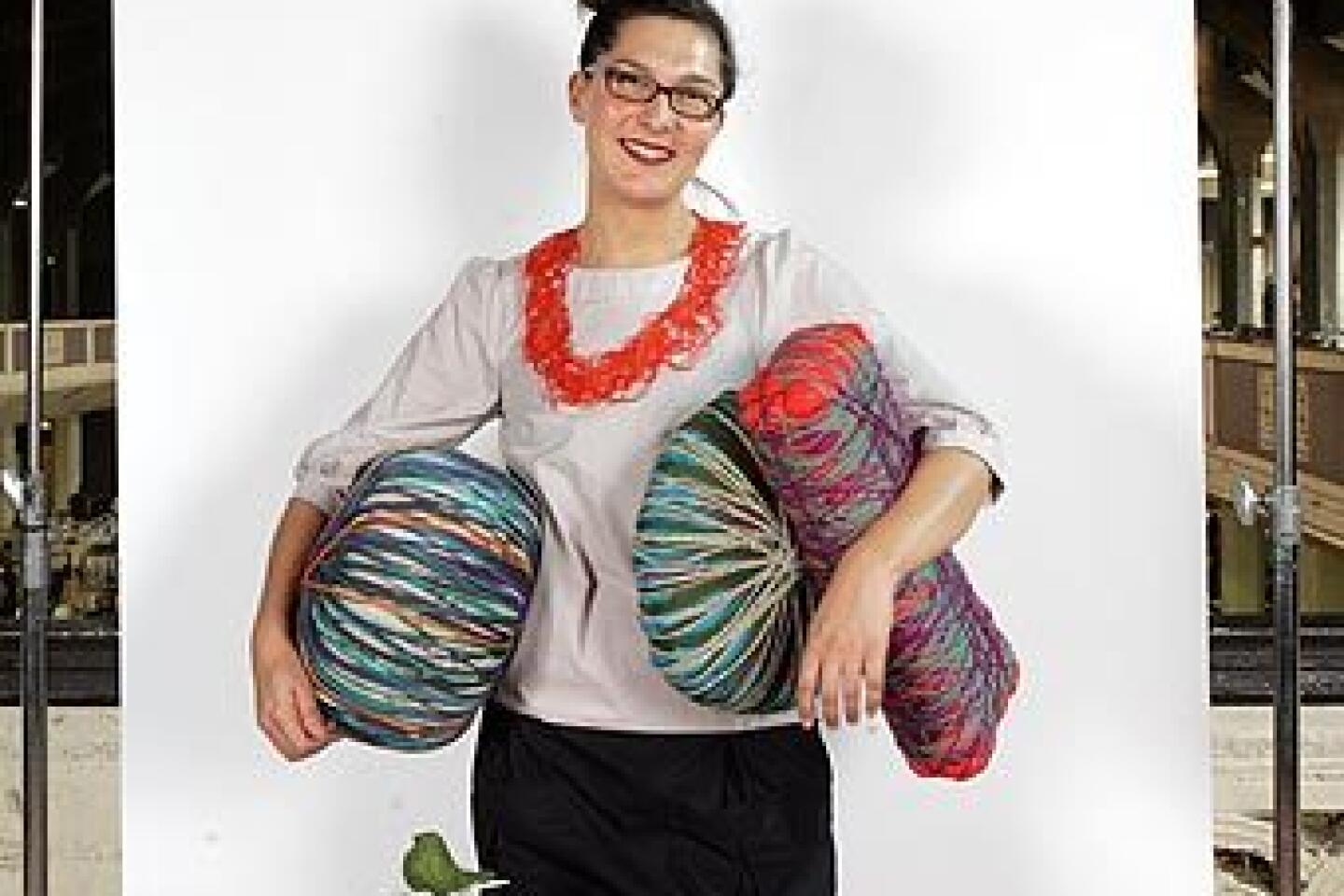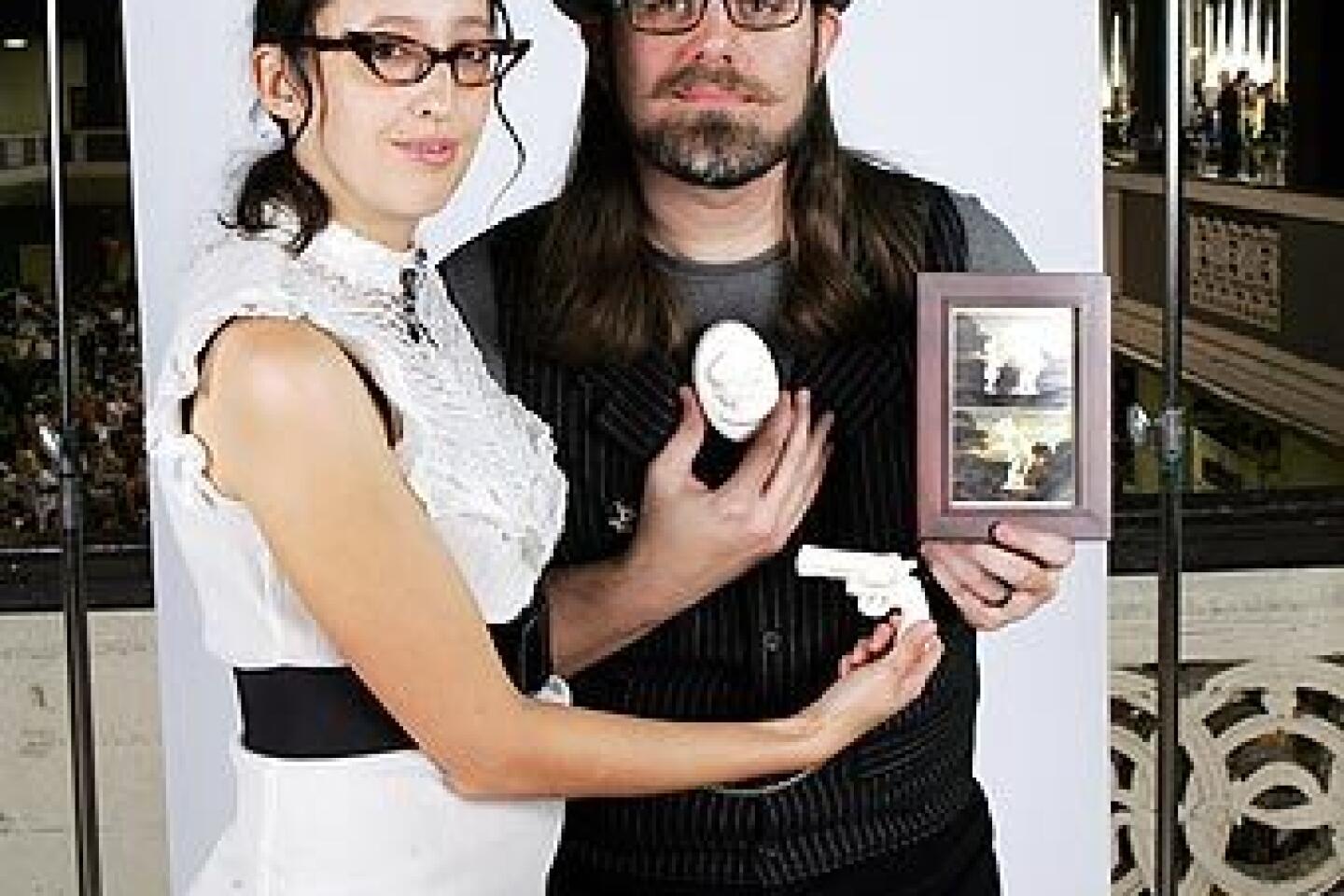Craft-making grows in popularity among young artisans
Erika Kern is not quite Martha Stewart. The 33-year-old from Bakersfield has, however, stitched up cloth portraits of the domestic diva. Kern has also painted, printed and sewn hundreds of patchwork robots and felt log pillows sold for $45 online -- and in the process pieced together a living as a full-time “maker,” the Facebook-generation term for do-it-yourselfer.
The economy may be rocky, but the future looks surprisingly plush for Kern and other members of Los Angeles’ Felt Club, a tight-knit community of artisans creating handmade decorative objects. The group’s annual holiday sale last Sunday drew about 4,500 shoppers who swarmed 144 booths, snapping up cute crocheted critters, stuffed felt cupcakes and notably less cuddly fare, such as handmade soaps shaped like pistols. Most vendors cleared $1,000 with ease.
The event’s success is more proof that a simmering movement -- the revival of old-fashioned crafts among the under-40 set -- is only growing stronger.
Some credit goes to the world of high-end interiors, where top contemporary designers such as Marcel Wanders have reinvigorated quaint traditions, creating eye-catching macramé-style chairs and tables that look like crocheted doilies. Other decorative objects employ these methods, along with beading, studding and embroidery.
But clearly consumers’ belt-tightening and environmental consciousness also have set the stage for a new form of home economics. As young, cash-strapped shoppers get turned off by overconsumption and disenchanted with homogenized, mass-marketed retail, more are shopping for one-of-a-kind pieces -- or are crafting their own.
“They may not make an afghan like their grandmothers did,” said Tina Barseghian, editor of Craft magazine, “but they will take the technique and apply it to their own home.”
At Felt Club, that notion applied to Angie Diersman’s Devil and Zombie oven mitts, sold for $18 a pop, and her Day of the Dead aprons, $30 each.
Event organizer Jenny Ryan, who crafts under the name Sew Darn Jenny, said her vendor list had doubled since the last Felt Club show in 2007. Applications for the juried show hit 400 this year, and attendance rose 50%.
Jane Morris, a Marina del Rey embroiderer who decorates linens with pre-World War II patterns, recalled the show two years ago when “Felt Club was 12 vendors in the blazing sun,” their tables set up in a parking lot behind a comic book store on Hollywood Boulevard. “Take a look at us now,” she said Sunday, surveying the bustle inside L.A.’s Shrine Auditorium Expo Center.
“Felt Club is certainly the biggest craft fair in Los Angeles and one of the most important in the U.S.,” Craft editor Barseghian said. The proliferation of such festivals showing “artful individual pieces you’ll never be able to find in any mall in America” is hardly a fringe movement, she added. “It’s being woven into the mainstream and affecting the way people think about what they buy.”
That’s particularly true in L.A., said Faythe Levine, co-author of “Handmade Nation” and director of a companion documentary film in production. “It’s a positive, empowering movement that is gaining momentum,” she said, “and a real antidote to the stereotype of L.A. being the capital of plastic surgery.”
::
Part of the popularity of craft fairs like Felt Club stems from the person, the story and the inspiration behind every sale. “You’re not feeding a faceless corporation, “Ryan said. “You’re supporting an artisan.”
The 21st century craft renaissance follows a long tradition of do-it-yourself creative expression. “Handmade culture has gone through many permutations,” Ryan said, “from hippie homesteaders in the 1960s to punk rockers who made their own clothes in the 1970s and people who published zines and graphic novels in the ‘80s and ‘90s.”
As the digital equivalent of old-fashioned quilting bees, craft websites have fostered a global network based on cooperation rather than competition. Consequently, the new generation of crafters has absorbed a world of cultural influences. Japanese toys and animation, vintage Americana, nature-inspired Scandinavian design, Mexican folk art and the sculptures of Pop artist Claes Oldenburg are threads running through much of the work. So is an undeniable sense of whimsy.
“There’s a lot of cuteness and humor,” says bowler-hat devotee Wilhelm Staehle, 28, who with wife T.D. Rio, 29, form the Bazaarium. Their darkly witty neo-Victorian wares include the aforementioned pistol-shaped soaps as well as playfully macabre artwork, including one framed piece with two images: the first showing storybook silhouettes of a child and a bear, and the second showing the silhouette of the child in the bear’s belly.
Staehle and Rio, both veterans of comic book conventions, see Felt Club as part of the hip-hunting continuum.
“Whether it’s cool videos on YouTube or handmade gifts, people like being able to find new things for the first time,” Staehle said. “It makes them pioneers and trendsetters amongst their friends.”
The viral effect of the Internet has created a more viable marketplace for these young crafters. Etsy, the indie-craft e-commerce destination with 200,000 registered sellers, currently lists 2.6 million handmade items. Founded in 2005, it expects to broker $100 million in sales this year. Southern California is its largest market.
Etsy Vice President Matt Stinchcome believes the rise in crafts can be partly attributed to employment defined by sensory deprivation.
“So many people have jobs sitting at a computer,” he said. “There is no tangible product with a tactile experience at the end of the workday, so you see more people want to make something with their hands.”
He calls the site’s customers “conscientious consumers.”
“They want to know how the products are made and who made them and the ecological and social ramifications of their purchases,” he said.
Indeed, a new generation sees crafts also as a form of political, social or environmental consciousness. Or as Ryan said: “I like to focus on objects made with recycled and repurposed materials that make people realize that green crafting doesn’t have to look like cat barf.”
::
Virtuous, however, isn’t necessarily prosperous.
“A lot of people who fantasize about crafting for a living don’t have a realistic portrait of what it’s like,” Ryan said. As with many who populate the craft universe, the Bazaarium’s Staehle and Rio hold day jobs. He is a graphic designer specializing in book jackets; she is a cartoonist for “Sabrina the Teenage Witch.” Felt Club participant Narumi Ogawa parlayed her Japanese crochet dolls known as amigurumi into the how-to book “Mr. Funky’s Super Crochet Wonderful.”
Ryan plans to open Home Ec, a space within the Silver Lake boutique Reform School, where she will sell products and host workshops. She has “Sew Darn Cute” due out from St. Martin’s Press in February.
Then there is Felt Club. Even as new craft fairs emerge and established events such as Chicago-based Renegade and Bust Magazine’s Craftacular in New York plan to expand into Southern California, Ryan harbors no ambitions of making Felt Club a national franchise.
“Los Angeles has such a strong cross-section of independent artistry,” she said. “I’ll never get bored of highlighting all the pockets of crazy creativity the city has to offer.”
Which, not surprisingly, is the raison d’être of Felt Club. Kern, who showcases her felt faux logs on the website My Imaginary Boyfriend, summed up the show this way. “Every year I want to spend more money than I make.”
Keeps is a Times staff writer.
More to Read
Sign up for our L.A. Times Plants newsletter
At the start of each month, get a roundup of upcoming plant-related activities and events in Southern California, along with links to tips and articles you may have missed.
You may occasionally receive promotional content from the Los Angeles Times.
